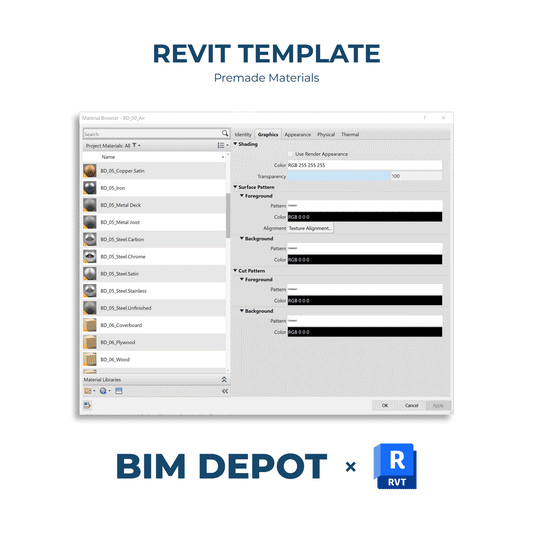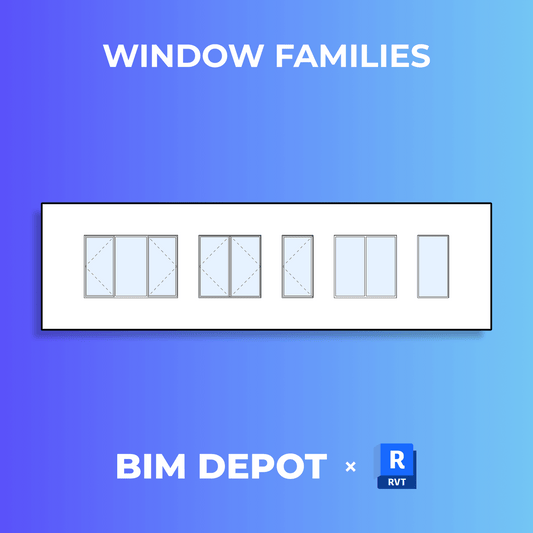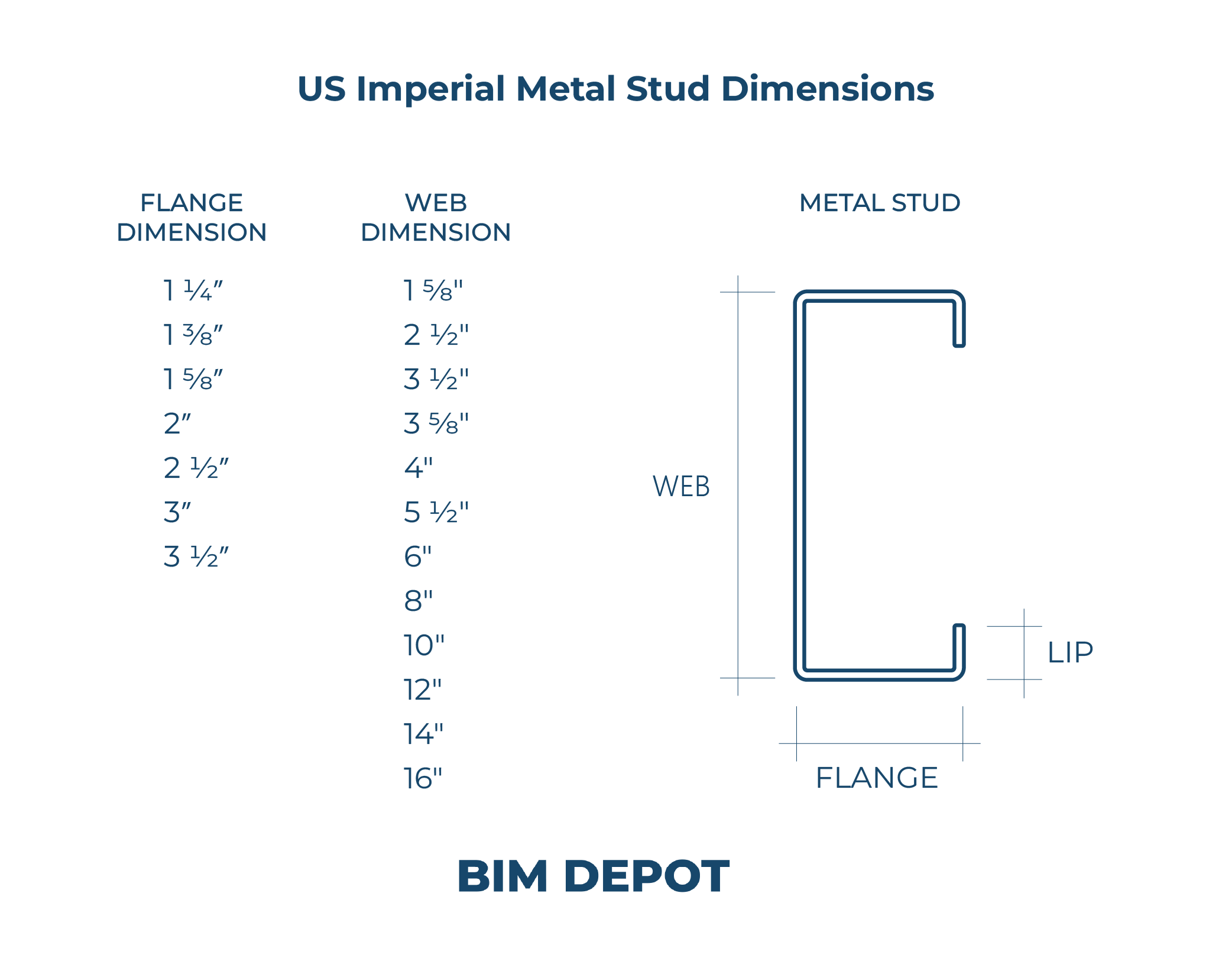
FREE Detail Component
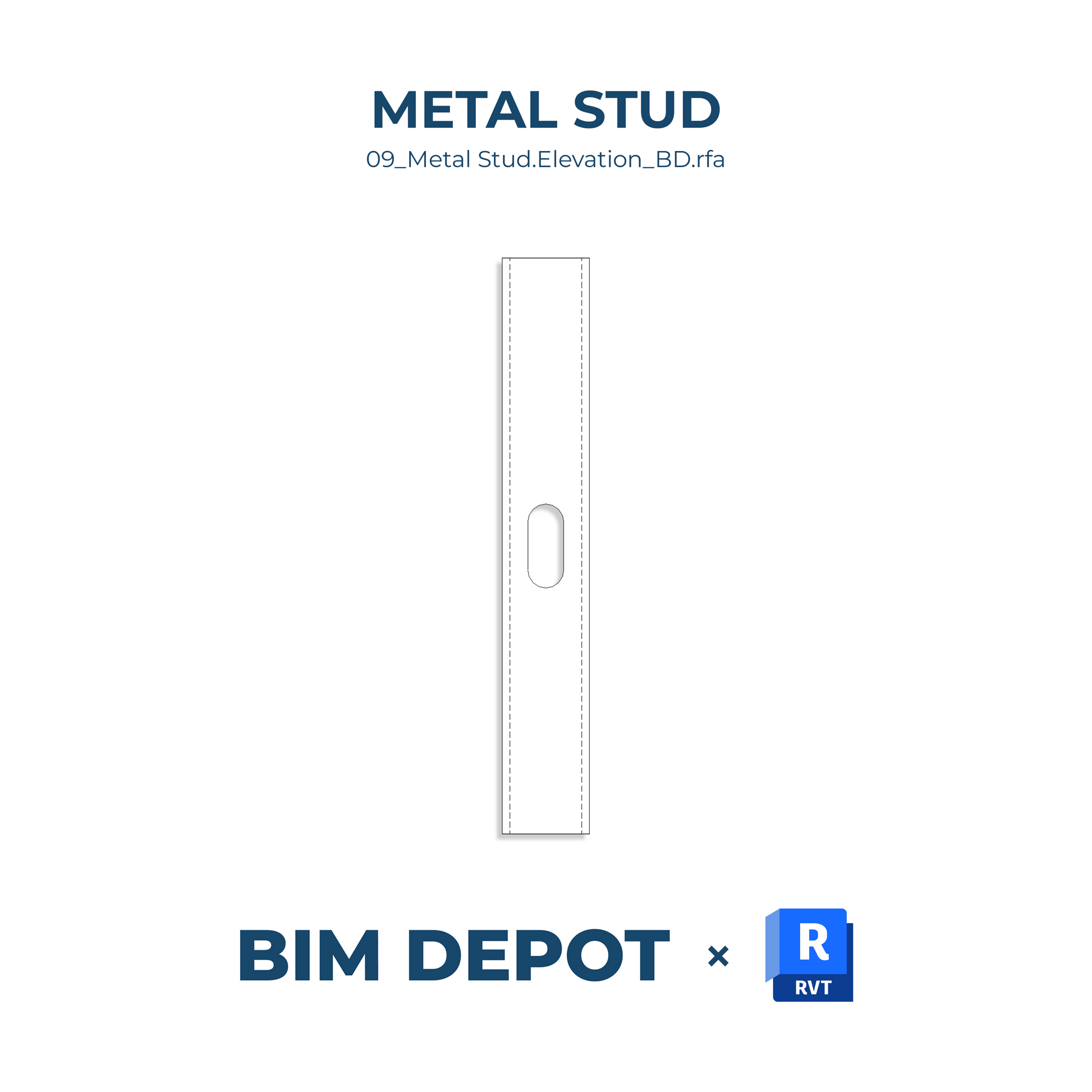
BIM Depot
Metal Stud Side - Revit Detail Component Family
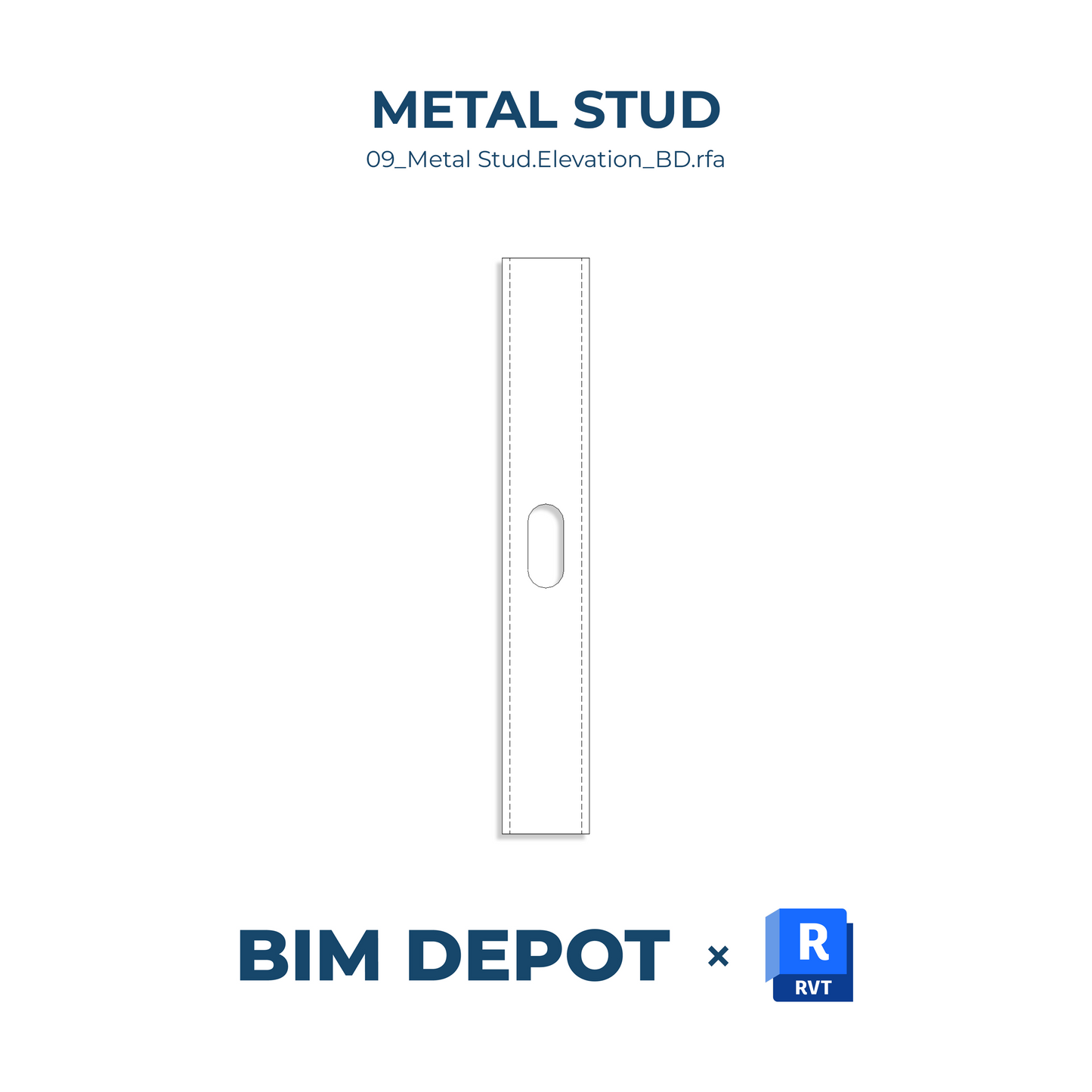
Metal Stud Dimensions Explained
Metal stud dimensions are based on their unique manufacturing process, design standards, and intended applications. Here’s a breakdown of how metal stud dimensions work:
Core Dimensions
- Metal studs are typically specified by their web width, flange width, and return lip dimensions. These measurements define the stud’s size and shape:
- Web width. This is the vertical portion of thestud and determines the thickness of the wall cavity. Common sizes include 1-5/8”, 2-1/2”, 3-5/8”, 4”, and 6”.
- Flange width. These are the flat edges on either side of the web that help secure drywall or other materials. Standard flange sizes range from 1-1/4” to 2”.
- Return lip. The small inward fold at the edgeof each flange adds rigidity and prevents twisting during installation, typically measuring 1/4” to 1/2”.
Gauge Thickness
- Metal studs are made from cold-formed steel, and their strength depends on the steel’s gauge (thickness). The gauge determines whether the stud is suitable for load-bearing or non-load-bearing applications:
- Light-gauge studs. Commonly 25-gauge or 20-gauge, used in interior, non-structural walls.
- Heavy-gauge studs. Ranging from 18-gauge to 12-gauge, used in structural applications like exterior walls or load-bearing frames.
Standardization
- The dimensions of metal studs are standardized to ensure compatibility with common building materials, such as drywall. For example:
- 3-5/8” studs: A common size for interior walls, allowing a sufficient cavity for utilities like electrical wiring and plumbing.
- 6” studs: Often used in exterior walls or walls requiring additional space for insulation or structural purposes.
Customization
- Metal studs can be manufactured in custom lengths, making them
versatile for projects with specific height requirements. This flexibility
minimizes waste and reduces the need for cutting during installation.
Applications and Purpose
- The design of metal studs is optimized for specific construction purposes:
- Non-load-bearing walls. Lighter and thinner studs to support drywall and create partitions.
- Load-bearing walls. Heavier and thicker studs to provide structural support.
Metal stud dimensions are tailored for precision, strength, and ease of use in both structural and non-structural applications. Their design allows for flexibility and compatibility with building materials, ensuring efficiency in a variety of construction projects.
BIM Assets to Reduce Overhead
-
BIM Depot Revit Template
Regular price $299 USDRegular priceUnit price / per -
Doors | Revit Family Collection
Regular price $89 USDRegular priceUnit price / per -
Windows | Revit Family Collection
Regular price $59 USDRegular priceUnit price / per -
Wall Openings | Revit Family Collection
Regular price $39 USDRegular priceUnit price / per


